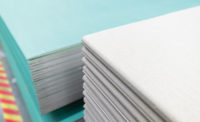Global Insulation Trends








Through 2018, global demand for insulation is projected to advance 5.0 percent annually to 24.9 billion square meters of R-1 value, a significant increase from the rate of the 2008-2013 period. Strong growth in residential building construction activity will be the primary driver of demand worldwide. In developing countries, rising building construction and industrial activity will lead to increased demand for insulation. In many high-income countries, insulation demand will rebound from downturns during the 2008-2013 period that were caused in part by sharp declines in housing construction. Government efforts, particularly in Western Europe, to reduce energy consumption will lead to the adoption of new building codes that require increased insulation usage. In the industrial, HVAC, and OEM markets for insulation, demand will be driven by expanding manufacturing activity, appliance output, and HVAC system installations.
The Asia/Pacific region is forecast to post the fastest growth in insulation demand through 2018, aided by advances in building construction activity as well as manufacturing and industrial output. More than 58 percent of new global insulation demand generated between 2013 and 2018 will be attributable to this region. Among the Asia/Pacific countries expected to post solid growth are China, India, and Indonesia.
Rural-to-urban migration in developing countries in the Asia/Pacific, Africa/Mideast, and Central and South America regions will stimulate building activity in urban areas and therefore insulation demand. Rising per capita incomes will encourage the use of modern building techniques and materials such as insulation. Some countries in these areas are expected to adopt minimum insulation requirements for buildings, further contributing to demand gains.
The Regional Insulation Market
In 2013, insulation demand in North America totaled 4.5 billion square meters of R-1 value, representing 23 percent of global consumption. The regional market is dominated by the U.S., which comprised 88 percent of regional demand in 2013. Per capita usage of insulation in Canada and the U.S. is among the highest in the world, while in Mexico intensity of insulation use relative to GDP, fixed investment spending, and population size is low by global standards due to the country’s warm climate and less developed economy.
Between 2008 and 2013, demand for insulation in North America fell slightly. The sharpest losses were seen in nonresidential applications, as nonresidential construction spending plummeted. The U.S. was responsible for most of the losses recorded during this period. Insulation demand in terms of R-1 value in Canada was stagnant during this time, while Mexico saw moderate gains in demand.
Through 2018, demand for insulation materials in North America is projected to advance 5.2 percent per year to 5.8 billion square meters of R-1 value, as the market rebounds. The U.S., in particular, is expected to post rapid gains as the construction markets recover. The fastest growth is projected in the residential market, primarily due to the rebound in the U.S. housing market. Demand for insulation in nonresidential applications is also projected to post solid growth.
What the Future Holds
Considering the major types of insulation globally, foamed plastic insulation demand is forecast to rise faster than the average through 2018, at 6.8 percent per annum. This type of insulation can be used in many different applications, including the production of household appliances, building construction, and some industrial uses. Insulating panels with metal skins and foamed plastic cores are used extensively in Russia and China, among other areas. Foamed plastic insulation is also utilized in the manufacture of refrigerators, freezers, and refrigerated transport vehicles.
Global demand for fiberglass insulation is expected to expand at a just below average pace through 2018. North America was the leading market for these products in 2013, accounting for 47 percent of demand. In residential construction applications, the U.S., Canada, and Australia are the primary consumers of fiberglass insulation. In other regions, demand for fiberglass insulation is more limited, but it continues to gain market share from mineral wool as it is less expensive.
Sales of mineral wool insulation are projected to post the slowest growth through 2018. Mineral wool is more expensive to produce than other types of insulation, causing it to lose market share. Mineral wool is often used in construction and industrial applications due to a very high temperature resistance, which allows it to improve fire ratings in buildings and perform better in high temperature industrial settings. Western Europe was the largest market for mineral wool in 2013.
Through 2018, demand for all other types of insulation is forecast to advance at a pace in line with the global average. Products in this category include newly developed technologies such as aerogels, environmentally friendly options such as cork and sheep’s wool, and low cost mineral and fiber insulation products such as perlite.
Looking for a reprint of this article?
From high-res PDFs to custom plaques, order your copy today!










